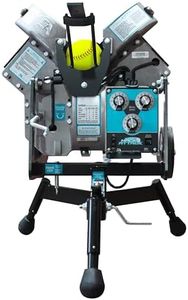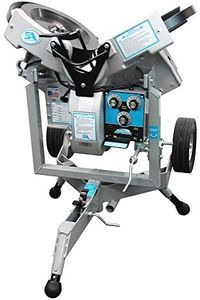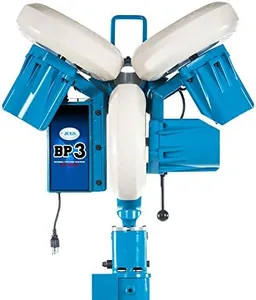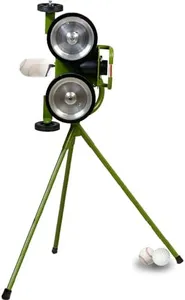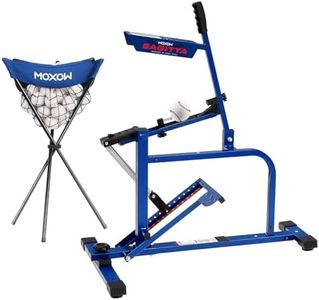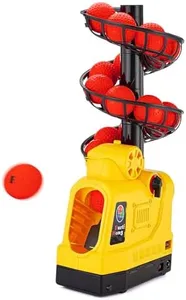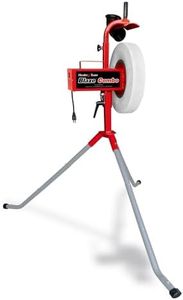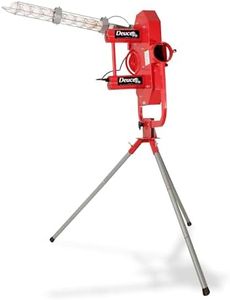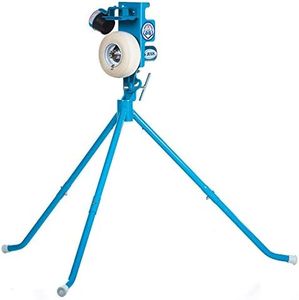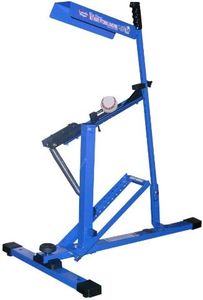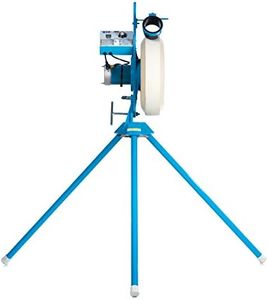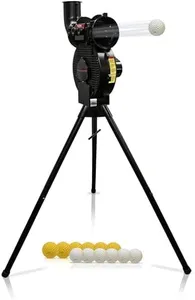10 Best Baseball Pitching Machines 2025 in the United States
Our technology thoroughly searches through the online shopping world, reviewing hundreds of sites. We then process and analyze this information, updating in real-time to bring you the latest top-rated products. This way, you always get the best and most current options available.

Our Top Picks
Winner
Sports Attack Junior Hack AttackTM Three Wheel Pitching Machine
Most important from
107 reviews
The Junior Hack Attack Softball Pitching Machine is a solid choice for youth leagues and more serious drills up to college and professional levels. It offers a wide range of pitch types including fastballs up to 60+ MPH, risers, drops, and screwballs from both right and left arms, which is great for practicing different hitting scenarios. Its pitching head can rotate instantly to deliver various ground balls, line drives, pop-ups, or long fly balls, adding versatility to training sessions. The machine is designed primarily for softball, so it works best with regulation softball sizes.
Portability is a standout feature here—it weighs about 25 pounds and is compact enough to fit in small cars, making it easy to transport to games or practice fields. Durability appears well thought out, with a five-year limited warranty that covers key parts like wheels, motors, and controllers for two years, which suggests confidence in build quality. While not the lightest on the market, its combination of pitch variety, speed, and portability makes it a strong option for serious softball players and teams looking for a reliable machine.
If you need a pitching machine for baseball or lighter weight for very young players, you may want to consider alternatives tailored specifically for those needs.
Most important from
107 reviews
Junior Hack Attack Baseball Pitching Machine
Most important from
305 reviews
The Junior Hack Attack Baseball Pitching Machine by Sports Attack is a versatile machine designed for a wide range of users, from youth league players to professional teams. It offers an impressive pitch speed of over 70 MPH and can throw a variety of pitch types, including curves, sliders, fastballs, split fingers, and knuckleballs. This makes it suitable for practicing different batting techniques and improving hitting skills. The machine’s head can pivot to throw ground balls, line drives, pop-ups, and fly balls up to 250 feet, adding to its versatility for fielding practice as well.
One of the standout features is its portability; despite its robust capabilities, it fits into any compact car, even a Mini Cooper, making it easy to transport to different practice locations. However, its weight (47.63 kilograms) might still be a concern for some users when it comes to lifting and setting it up. The machine is built to last, with a warranty covering motors, controllers, and wheels for 2-5 years, ensuring long-term use.
Potential buyers should be aware that the package includes only the machine and legs, so additional accessories might be needed for full usage. The Junior Hack Attack is a strong choice for those looking to enhance their baseball training with a reliable and multi-functional pitching machine.
Most important from
305 reviews
Hack Attack Softball Pitching Machine by Sports Attack
Most important from
12 reviews
The Hack Attack Softball Pitching Machine by Sports Attack is a solid choice for those looking for a reliable pitching machine for baseball practice, especially softball. It comes with the essential components including motors and legs, indicating it's ready for serious use. One of its strengths is durability, supported by a 2-year warranty on key parts like wheels, controllers, and motors, which suggests the manufacturer stands behind the build quality.
The machine is quite heavy at about 193 pounds, which means it’s not very portable or easy to move around frequently. This weight likely adds to its stability during use but may require a dedicated practice space.
For users who want a sturdy, dependable pitching machine primarily for softball practice and don’t mind the weight, this model can be a good fit. Those needing lighter, more portable options or more variety in pitch types might want to explore other machines.
Most important from
12 reviews
Buying Guide for the Best Baseball Pitching Machines
Choosing the right baseball pitching machine can significantly enhance your training and improve your game. When selecting a pitching machine, it's important to consider various specifications that will determine how well the machine meets your needs. Understanding these key specs will help you make an informed decision and ensure you get the best fit for your training requirements.FAQ
Most Popular Categories Right Now
